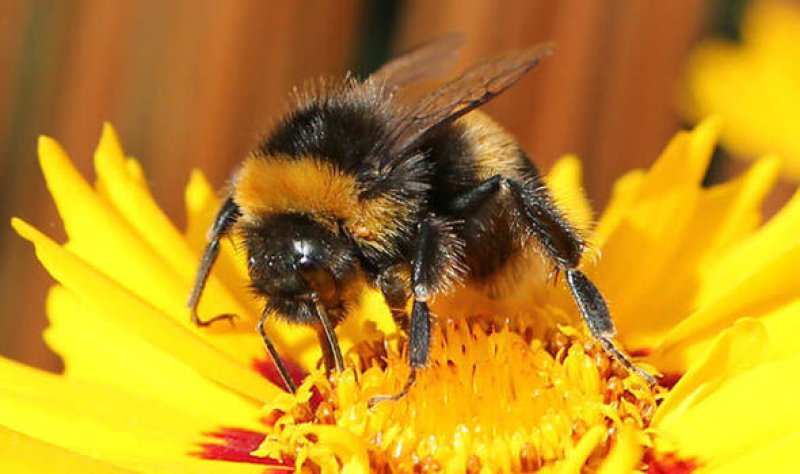When you were young, were you the type of child who would scour open fields looking for bumble bees? Today, it is much harder for kids to spot them, since bumble bees are drastically declining in North America and in Europe.
A new study from the University of Ottawa found that in the course of a single human generation, the likelihood of a bumble bee population surviving in a given place has declined by an average of over 30%.
Peter Soroye, a PhD student in the Department of Biology at the University of Ottawa, Jeremy Kerr, professor at the University of Ottawa and head of the lab group Peter is in, along with Tim Newbold, research fellow at UCL (University College London), linked the alarming idea of ”climate chaos” to extinctions, and showed that those extinctions began decades ago.
“We’ve known for a while that climate change is related to the growing extinction risk that animals are facing around the world,” first author Peter Soroye explained. “In this paper, we offer an answer to the critical questions of how and why that is. We find that species extinctions across two continents are caused by hotter and more frequent extremes in temperatures.”
“We have now entered the world’s sixth mass extinction event, the biggest and most rapid global biodiversity crisis since a meteor ended the age of the dinosaurs.” – Peter Soroye
Massive decline of the most important pollinators on Earth
“Bumble bees are the best pollinators we have in wild landscapes and the most effective pollinators for crops like tomato, squash, and berries,” Peter Soroye observed. “Our results show that we face a future with many less bumble bees and much less diversity, both in the outdoors and on our plates.”
The researchers discovered that bumble bees are disappearing at rates “consistent with a mass extinction.”
“If declines continue at this pace, many of these species could vanish forever within a few decades,” Peter Soroye warned.
The technique
“We know that this crisis is entirely driven by human activities,” Peter Soroye said. “So, to stop this, we needed to develop tools that tell us where and why these extinctions will occur.”
The researchers looked at climate change and how it increases the frequency of really extreme events like heatwaves and droughts, creating a sort of “climate chaos” which can be dangerous for animals. Knowing that species all have different tolerances for temperature (what’s too hot for some might not be for others), they developed a new measurement of temperature.
“We have created a new way to predict local extinctions that tells us, for each species individually, whether climate change is creating temperatures that exceed what the bumble bees can handle,” Dr. Tim Newbold explained.
Using data on 66 different bumble bee species across North America and Europe that have been collected over a 115-year period (1900-2015) to test their hypothesis and new technique, the researchers were able to see how bumble bee populations have changed by comparing where bees are now to where they used to be historically.
“We found that populations were disappearing in areas where the temperatures had gotten hotter,” Peter Soroye said. “Using our new measurement of climate change, we were able to predict changes both for individual species and for whole communities of bumble bees with a surprisingly high accuracy.”
A new horizon of research
This study doesn’t end here. In fact, it opens the doors to new research horizons to track extinction levels for other species like reptiles, birds and mammals.
“Perhaps the most exciting element is that we developed a method to predict extinction risk that works very well for bumble bees and could in theory be applied universally to other organisms,” Peter Soroye indicated. “With a predictive tool like this, we hope to identify areas where conservation actions would be critical to stopping declines.”
“Predicting why bumble bees and other species are going extinct in a time of rapid, human-caused climate change could help us prevent extinction in the 21st century.” – Dr. Jeremy Kerr
There is still time to act
“This work also holds out hope by implying ways that we might take the sting out of climate change for these and other organisms by maintaining habitats that offer shelter, like trees, shrubs, or slopes, that could let bumble bees get out of the heat,” Dr. Kerr said. “Ultimately, we must address climate change itself and every action we take to reduce emissions will help. The sooner the better. It is in all our interests to do so, as well as in the interests of the species with whom we share the world.”































